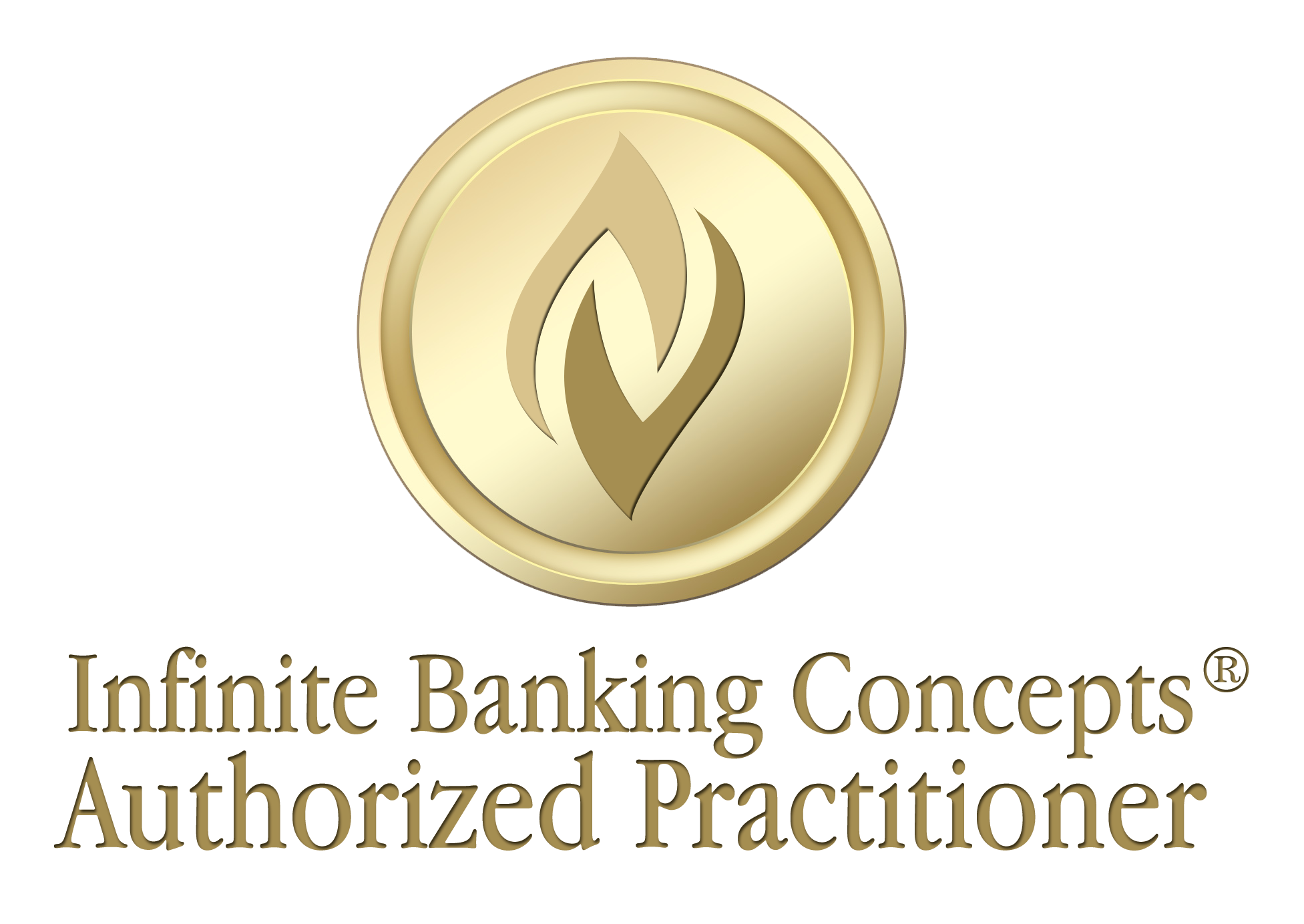
A six-year-old boy sits at the kitchen table, legs dangling off the chair, watching his parents slide a stack of papers toward him. They explain, patiently, that the money in his name – a few thousand dollars tucked into a whole life insurance policy since he was a baby – can do more than sit idle. A friend of the family needs a loan. The boy nods, wide-eyed, as they tell him he has the power to make that loan himself, from his own “bank.”
They write up the agreement, a real contract with interest payments. A year later, the boy beams as his father shows him the numbers: $3,000 in interest earned. Enough to pay his premiums for another year. Enough to make him feel like the money wasn’t just saved for him – it was already working for him.
That moment, captured in a short family video, says more about the future of money than a thousand spreadsheets. The boy didn’t just learn that his policy could grow. He learned that he could act like a bank – deciding, lending, collecting. At six years old, he had already stepped into a role most adults never experience: controlling money, instead of being controlled by it.
The Problem with “The Default Path”
For years, the standard advice to parents has been straightforward: set up a 529 college savings plan. That’s the “responsible” thing to do. Save early, watch the funds grow with the market, and one day your child will use it for tuition.
It sounds good in theory. In practice, it comes with limits. The money can only be used for educational expenses. The growth is tied to market performance. And if your child chooses not to go to college – or goes a different route, like a trade school or entrepreneurship – your options shrink quickly.
I’ve seen both sides of this. My own family benefited from 529 plans set up by grandparents. They helped cover my oldest daughter’s tuition. But my youngest chose not to pursue college. Her 529 funds couldn’t simply be repurposed for something else. We ended up transferring them to her sister. That worked for us. But what if you only have one child? What if their path doesn’t fit the rules?
That’s the reality families are running into more often. College is no longer the guaranteed, linear track it once was. Student loans are unpredictable. Government rules on savings programs change with the wind. And yet, parents are told there’s no better option.
The Hidden Alternative
Here’s what too few people realize: there’s another path, and it’s been sitting in plain sight for generations. Participating whole life insurance.
Not the kind of life insurance most people imagine – something you only think about for protection against the worst-case scenario. These policies, when set up properly, become savings and liquidity tools. They grow steadily over time, compounding tax-free. They’re private contracts, not visible to lenders or government agencies. And most importantly: they’re flexible.
You can use them for education if you want. But you can also use them for anything else – launching a business, buying property, investing in opportunities, even handling emergencies. It’s not pigeonholed into one outcome.
That flexibility changes everything. Because the truth is, no one knows what college will look like in 18 years. But we do know this: your kids will need financial options, whether they sit in a lecture hall or open a hardware store.
Privacy and Control
One of the least-discussed advantages of whole life insurance is how private it is.
When families apply for student loans, the government wants to know everything: income, assets, savings accounts. But here’s the difference: the cash value inside a whole life policy doesn’t need to be declared. It doesn’t show up.
That means parents and kids can still qualify for loans even if they’ve built significant cash value inside these policies. And depending on interest rates at the time, it may even make sense to take the loan and let the policy continue compounding.
“They cannot legally find out what you have inside of cash value – it’s extraordinarily private.”
In an era when almost every financial move feels tracked, flagged, and reported, the ability to build assets privately is not just convenient. It’s empowering.
The Educational Angle
But the real power isn’t just in the numbers. It’s in the teaching.
Think back: did anyone teach you how to use money, other than to save it or spend it? Most of us grew up with a piggy bank at best. We weren’t taught how to borrow against assets, how to repay ourselves, or how to think like bankers.
Whole life policies give parents a built-in way to do this. A ten-year-old wants to buy something? Instead of handing them money or telling them “save up,” parents can show them the loan process inside their policy. Borrow against the cash value. Pay it back. Watch how the balance keeps growing, untouched, because you borrowed from the insurance company – not from your own principal.
It turns the abstract into reality. Kids see their money grow even as they use it. They learn that borrowing is not about being at the mercy of banks – it’s about using leverage responsibly.
“It’s a huge opportunity to teach kids how money works at a young age.”
By the time these kids hit 18, they don’t just have savings. They have experience functioning as their own banker. That’s a head start you can’t put a price tag on.
The Long Game
These policies don’t stop at age 18. They keep going. Parents can transfer ownership to their children once they’re of age and able to handle the premiums. The child can then continue to build on it, adding policies, shifting beneficiaries, and carrying it through every stage of life.
That’s where the generational aspect comes in. Over time, families build systems of policies. Parents, kids, even grandparents – each holding contracts that connect to one another, creating a private network of savings and liquidity that lives outside government programs and Wall Street volatility.
And the benefits stretch all the way into old age. Most contracts include a chronic illness rider, which allows the insured to tap into the death benefit if long-term care is needed. It’s built-in protection that many families never realize they can access.
“You’re not buying life insurance on your kids – you’re buying it for them.”
Think about that difference. For them, not on them. The policies are tools, not just safety nets. They’re gifts of independence that compound across a lifetime.
Real Proof
Skeptical? I understand. Let’s look back at the six-year-old lender.
His parents had started a whole life policy as soon as they could, putting in a few thousand dollars a year. By age six, he had enough cash value to issue a $25,000 loan to someone the family knew. They signed real paperwork, set a reasonable interest rate, and treated it as a legitimate bank loan.
A year later, he earned $3,000 in interest. Enough to pay his premiums for the next year. Enough to make him feel like his money wasn’t just sitting there. Enough to give him the lesson of a lifetime: money can go to work for you, if you understand how to use it.
Now contrast that with a 529 plan. Could it do the same? Could it teach him those lessons at six years old? Could it be used for anything outside the narrow box of education? No.
“By the time he’s 17 or 18, he’ll be super savvy on how money works.”
That’s not theory. That’s evidence.
Why This Matters Now
College costs are unpredictable. The job market is changing faster than any generation before. Entrepreneurship, trades, and alternative paths are gaining momentum. Families need tools that are flexible enough to adapt, not programs that lock them into yesterday’s assumptions.
Whole life insurance, used this way, is not about chasing returns. It’s about control. It’s about privacy. And it’s about teaching the next generation how to handle money with confidence.
That’s why I believe it’s one of the most overlooked financial tools available today.
When parents hear “life insurance for kids,” they often recoil. It sounds cold, unnecessary. But that’s missing the point.
These policies aren’t about preparing for the worst. They’re about building systems that empower kids for the best. Systems that grow tax-free, protect privacy, and teach financial literacy before adulthood. Systems that can be handed down and multiplied, turning families into their own banks.
If you’re a parent weighing the options, don’t just ask: “How can I pay for college?” Ask: “How can I give my child financial control for life?”
That’s the shift. That’s the opportunity. And if you’re curious how to start, I’d love to have that conversation.




